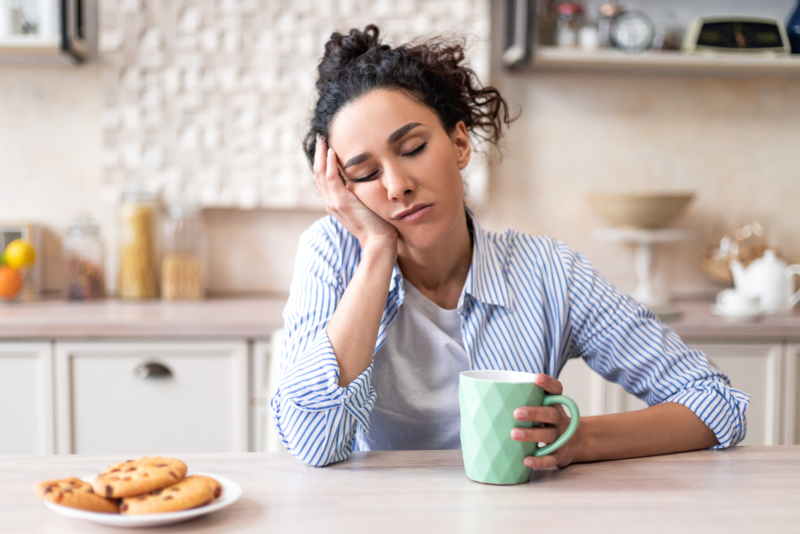News
Adjusting to Shorter Winter Days

When the clocks roll forward in March for daylight saving time, the loss of an additional hour of sleep can have an impact on the body. The purpose of daylight saving time is to allow for extra exposure to the sun in the evening throughout the summertime and fall months. So when daylight saving time ends on November 3, 2024, what impact does it have on a person’s body?
Several sleep studies have been conducted throughout the years, dating back to 1979, to determine the impact daylight saving time has on sleep.
According to the Sleep Foundation, despite gaining an extra hour in November, sleep loss can occur. This can cause mood changes, as well as increased car accidents, which can happen following both spring and fall time changes.
The autumn transition is often popularized as a gain of one hour of sleep, but, according to a 2013 study, there is little evidence of extra sleep on that night. In fact, the cumulative effect of five consecutive days of earlier rise times following the autumn change actually suggests a net loss of sleep across the week. Indirect evidence of an increase in traffic accident rates, and change in health and regulatory behaviors, which may be related to sleep disruption, suggest that adjustment to daylight saving time is neither immediate, nor without consequence. Data from a 2021 study suggest that safety-related incidents increase in the week after time changes by as much as 18.7% in the spring and 4.9% in the fall.
According to one study, after both spring and autumn daylight saving time changes, although adjustment of times of retiring and falling asleep appeared to be instantaneous, waking times took up to one week to adjust. The autumn change resulted in beneficial effects on mood on awakening and perceived sleep quality that might appear for much of the week following the rolling back of the clocks.
To further support this, another study found that after the autumn transition, a significant advance of the get-up time and a decrease of time in bed and total sleep time, were observed. The results highlighted a more strong deterioration of sleep/wake cycle quality after spring compared with autumn transition, confirming that human circadian system more easily adjusts to a phase delay (autumn change) than a phase advance (spring transition).
The end of daylight saving time brings about reduced light and shorter fall and winter days. According to AARP, one study found that the fall clock change was associated with an 11 percent increase in depressive episodes. During fall and winter, the lack of sun exposure can cause low mood and depression, which is often referred to as Seasonal Affective Disorder (SAD). SAD is primarily caused by shorter daylight hours that disrupt the body's natural circadian rhythm and can lead to decreased serotonin production, a neurotransmitter associated with mood regulation. Melatonin levels can also be impacted by changing seasons and reduced light exposure, impacting sleep patterns and mood.
According to the Mayo Clinic, symptoms specific to winter-onset SAD that occurs in fall and winter may include:
- Oversleeping
- Appetite changes, especially a craving for foods high in carbohydrates
- Weight gain
- Tiredness or low energy
“While daylight savings may contribute to sleep disruptions and lower mood, know that here in the mountains, we have a variety of options for treating Seasonal Affective Disorder,” said Dr. Paige Baker-Braxton, Director of Outpatient Behavioral Health for Vail Health. “Spending time outdoors, even on cloudy or brisk days, can help regulate our mood by providing exposure to natural light and comfort in the beauty of our landscape. Engaging with our environment through activities like hiking, skiing, or simply standing in the sun can offer a powerful antidote to the winter blues."
While the data is clear that disruptions to our sleep, circadian rhythm, and daylight can have significant impacts on our mental health, there are things we can do:
- Maximize Natural Light: Getting outside during daylight hours, even on cloudy days, can help alleviate symptoms. Open curtains and blinds at home and work to let in as much sunlight as possible.
- Light Therapy: Exposure to a special light box for 20-30 minutes a day mimics natural sunlight and can help reduce the overproduction of melatonin, which is linked to SAD.
- Physical Activity: Regular exercise, particularly outdoors, has been shown to improve mood by increasing endorphin levels. Even in cold weather, bundling up and taking a brisk walk can significantly help improve mental well-being. Get on those slopes!
- Healthy Lifestyle Choices: Maintaining a regular sleep schedule, eating well-balanced meals, and avoiding excessive alcohol and caffeine intake are essential for managing SAD symptoms. These changes help regulate energy and mood.
- Psychotherapy: Psychotherapy, especially cognitive behavioral therapy (CBT), is highly effective in treating SAD. It helps individuals address negative thought patterns and behaviors associated with depression, fostering healthier responses to stress.
- Medication: In more severe cases, antidepressants such as selective serotonin reuptake inhibitors (SSRIs) may be prescribed to regulate serotonin levels, which can help alleviate depressive symptoms caused by SAD.
- Vitamin D: Some people benefit from taking Vitamin D supplements, particularly if they have a deficiency, as this can exacerbate depressive symptoms during the winter months. Talk to your physician for more information.
More News
-
New!
More

Screening Secrets: What Every Man Should Know About Prostate Cancer Screening
Prostate cancer is the most common type of non-skin related cancer in men, and it is the second leading cause of cancer-related deaths in men within the United States, behind lung cancer. Fortunately, if caught early, prostate cancer remains highly treatable and curable with minimally invasive procedures.
-
New!
More

Unplug to Recharge: Why a Digital Detox Is the Real Power Move for 2026
Our phones promise connection, convenience and control, yet most of us feel more scattered, stressed and sleepless than ever. The constant pings, scrolls and notifications have rewired our brains for distraction. The fix? Not abandoning technology altogether, but reclaiming balance.
-
New!
More

Beyond the Scale: Why Nutrition and Exercise Work Better Together
For decades, weight loss advice has been distilled into a simple equation: calories in, calories out. Eat less, maybe combine that with exercise, and the pounds will fall away. But according to experts at Vail Health, that equation overlooks a much bigger picture.





